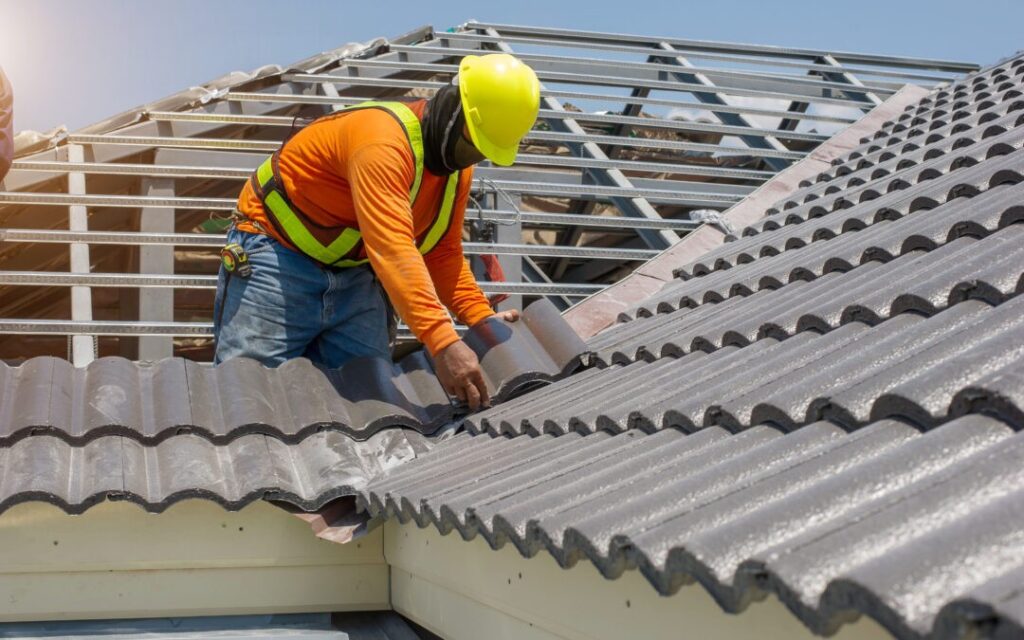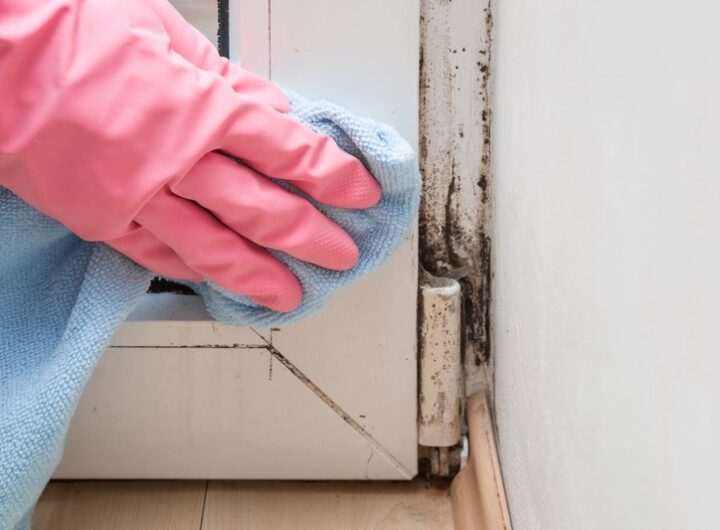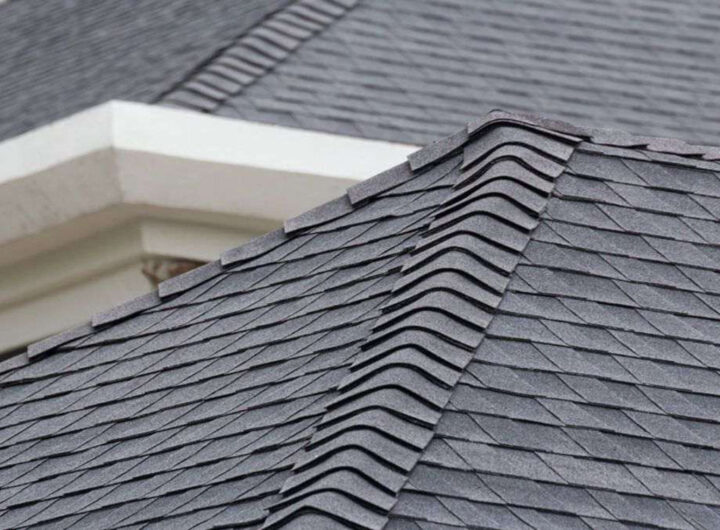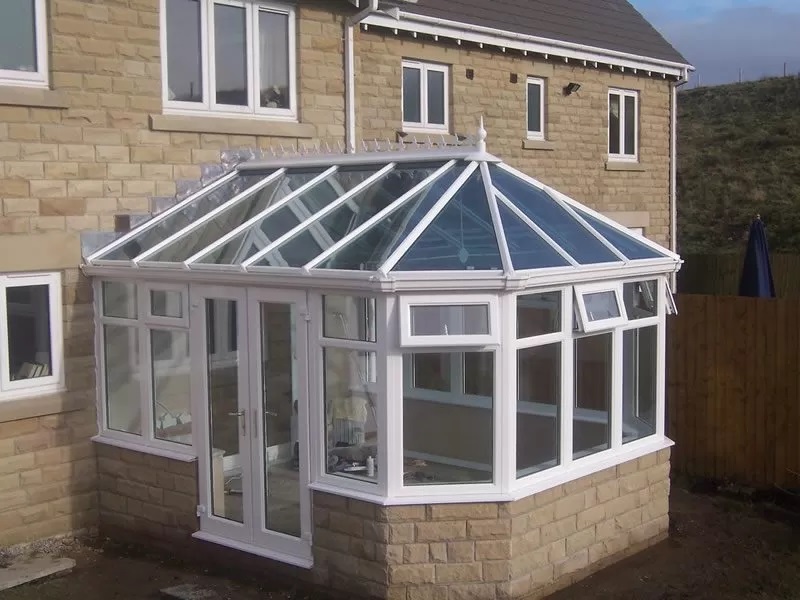
When it comes to choosing the right roofing material for your home, there are several factors to consider. The climate and weather conditions in your area, your budget, the desired lifespan of the roof, the maintenance required, and the overall style and aesthetics are all important considerations. In this blog post, we will explore these factors in more detail and discuss some of the most common roofing materials available on the market.
Factors to Consider
Climate and Weather
The climate and weather in your area play a significant role in determining the roofing material that is best suited for your roof. For example, if you live in an area that experiences heavy rainfall or snowfall, you would want a roofing material that is highly resistant to water damage, such as metal or slate. On the other hand, if you live in a hot and sunny climate, a material with good heat reflectivity, like white asphalt shingles or metal, can help keep your home cool and reduce energy costs.
Cost and Budget
Cost is another crucial factor when selecting a roofing material. Different materials vary in price, and it’s essential to consider your budget. Asphalt shingles are typically the most affordable option, making them popular among homeowners. Metal roofing, tile, and slate are usually more expensive but offer longer lifespans and better durability, making them a worthwhile investment in the long run.
Durability and Lifespan
The longevity of the roofing material is an important consideration, as it directly affects the overall value and cost-effectiveness. Asphalt shingles have a lifespan of around 20 to 30 years, while metal roofs can last up to 50 years or more. Tile and slate roofing, known for their exceptional durability, can easily last 50 to 100 years or longer. Considering the lifespan of the material is crucial to avoid frequent replacements and roof repair van nuys ca.
Maintenance and Upkeep
The level of maintenance required for a particular roofing material is another factor to keep in mind. Some materials require regular inspections and maintenance to ensure their longevity, while others are relatively low-maintenance. Asphalt shingles and metal roofs are generally easier to maintain, while tile and slate require occasional inspections and repairs.
Aesthetics and Style
The visual appeal and style of your roof are also important factors to consider, as your roof contributes significantly to the overall curb appeal of your home. Different roofing materials offer various styles and aesthetics to choose from. Asphalt shingles are available in a wide range of colors and designs, making them a versatile choice. Metal roofing can provide a modern or traditional look depending on the style selected. Tile and slate roofing offer a classy and elegant appearance, perfect for homes with a more traditional or Mediterranean-style architecture.
1. Asphalt Shingles
Asphalt shingles are the most common roofing material used in residential properties. They are affordable, easy to install, and come in a wide range of colors and styles. Asphalt shingles are available in different grades, with fiberglass and organic options. They generally have a lifespan of 20 to 30 years and require regular maintenance to maximize their durability.
2. Metal Roofing
Metal roofing offers excellent durability and can last up to 50 years or more. It is highly resistant to weather damage, fire, and rot. Metal roofs are available in various materials, including steel, aluminum, and copper, offering different aesthetic options. They are energy-efficient, reflecting heat and reducing cooling costs. While metal roofing is initially more expensive than asphalt shingles, its long lifespan and durability make it a cost-effective choice in the long run.
3. Tile Roofing
Tile roofing is known for its durability and distinctive appearance. It is commonly made from clay or concrete and offers excellent resistance to fire and weather damage. Tile roofs are popular in Mediterranean and Spanish-style architecture and can last 50 years or more. However, they are heavier than other roofing materials, so proper structural support is necessary. Tile roofs require periodic inspections and repairs to maintain their longevity.
4. Wood Shake
Wood shake roofing provides a rustic and natural look to a home. It is typically made from cedar or pine and offers good insulation properties. Wood shake roofs require regular maintenance to prevent issues such as rot, mold, and insect infestation. Regular sealing and treating are necessary to prolong their lifespan, which is typically around 30 years.
5. Slate Roofing
Slate roofing is known for its elegance, durability, and long lifespan. It is made from natural slate stone and can last 50 to 100 years or more. Slate roofs offer excellent resistance to fire, weather damage, and even insect infestation. However, slate roofing is heavy, and proper structural support is crucial. It is more expensive than other roofing materials, but its exceptional durability makes it a worthwhile investment for those seeking a long-lasting and visually appealing option.
6. Rubber Roofing
Rubber roofing, also known as EPDM roofing, is a cost-effective and durable option. It is made from recycled materials and offers great resistance to weather damage, UV rays, and ozone. Rubber roofs are lightweight and easy to install, making them a popular choice for both residential and commercial properties. They have a lifespan of around 30 to 50 years and require minimal maintenance.
7. Green Roofing
Green roofing, also known as living roofs or eco-roofs, is an environmentally friendly option. It involves the installation of vegetation on the roof surface, providing numerous benefits such as improved insulation, stormwater management, and reduced energy costs. Green roofs require specialized design and installation to ensure proper drainage and structural support. While they can be more expensive and require ongoing maintenance, they offer a unique and eco-friendly solution for those looking to incorporate sustainability into their homes.
Conclusion
Choosing the right roofing material for your home is a decision that should be carefully considered. Factors such as climate, budget, durability, maintenance, and aesthetics all play a role in determining the best option for your roof. Whether you opt for asphalt shingles, metal roofing, tile, wood shake, slate, rubber, or green roofing, it’s important to select a material that meets your specific needs and enhances the overall functionality and beauty of your home.


 Signs It’s Time for a Roof Replacement: What to Look For
Signs It’s Time for a Roof Replacement: What to Look For  The Top Benefits of Professional Roofing Maintenance Services
The Top Benefits of Professional Roofing Maintenance Services  The Benefits of Regular Roof Maintenance by a Professional Roofing Company
The Benefits of Regular Roof Maintenance by a Professional Roofing Company  A Step-by-Step Guide to Identifying Signs of Mold Growth on Your Ceiling
A Step-by-Step Guide to Identifying Signs of Mold Growth on Your Ceiling  Should you indulge in a DIY Roof Repair job or Call a Professional Roofer
Should you indulge in a DIY Roof Repair job or Call a Professional Roofer  Why Change to an excellent Conservatory Roof?
Why Change to an excellent Conservatory Roof?  Top Security Features to Look for in a Garage Door
Top Security Features to Look for in a Garage Door  Comprehensive Guide to Mold Removal in Hunterdon County: Safeguarding Your Home and Health
Comprehensive Guide to Mold Removal in Hunterdon County: Safeguarding Your Home and Health  Risks of Asbestos in Home Furnaces
Risks of Asbestos in Home Furnaces  Quartz Countertops Sacramento: Enhancing Homes with Timeless Elegance
Quartz Countertops Sacramento: Enhancing Homes with Timeless Elegance